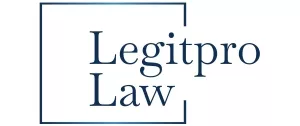- within Employment and HR topic(s)
- with Finance and Tax Executives
- in United States
- with readers working within the Retail & Leisure and Law Firm industries
In the ever-evolving realm of social security within India, the Employees' Provident Fund Organisation (EPFO) has rolled out notable revisions aimed at enhancing coverage and fostering formal employment.Commencing on November 1, 2025, the Employees' Provident Funds (Amendment) Scheme, 2025, introduces the Employees' Enrolment Scheme 20251 (EES 2025), which grants employers a limited amnesty period to address past instances of non-compliance without incurring substantial penalties.This initiative builds upon the achievements of the 2017 campaign that successfully incorporated 1.8 crore new subscribers.In conjunction with this, the Employment Linked Incentive (ELI) Scheme2, effective from August 1, 2025, provides financial incentives to stimulate hiring and workforce development.For employers facing compliance difficulties in a post-pandemic economic landscape, these interventions facilitate the reduction of liabilities, the formalisation of payroll systems, and access to subsidies, ultimately bolstering sustainable business growth.This article delves into the salient features of the amendment scheme and outlines the eligibility criteria for the ELI scheme, offering practical insights for human resource professionals and business executives.
Features of the Employees' Provident Funds (Amendment) Scheme, 2025
The amendment initiative, promulgated under the Employees' Provident Funds and Miscellaneous Provisions Act of 19523, seeks to rectify a critical gap: the exclusion of more than 6 million workers who joined establishments post July 1, 2017, yet were not enrolled in the Employees' Provident Fund (EPF) owing to either oversight or intentional omission. Commencing from November 1, 2025, until April 30, 2026, the EES 2025 represents a voluntary, employer-oriented initiative inspired by the successful campaign of 2017, which facilitated the enrolment of 1.8 crore subscribers.
At its essence, the scheme waives retrospective liabilities for employers, promoting a "forgive and forget" paradigm regarding compliance.The principal features encompass:
A. Broad Eligibility for Establishments: All entities registered under the EPF are deemed eligible, including those currently subject to inquiry for violations related to Section 7A (determination of applicability) or Paragraph 26B (recovery of damages). Furthermore, newly established firms are permitted to engage in this initiative, making it accessible for start-ups and SMEs as they navigate the complexities of post-pandemic recovery.This inclusivity is further extended to firms that are not yet registered; however, they must first complete the registration process to receive the associated benefits.
B. Targeted Employee Enrolment: The cohort of eligible employees comprises those who have been employed during the period spanning from July 1, 2017 to October 31, 2025 who remain alive and actively employed as of the declaration date, yet were previously not enrolled in the scheme.Individuals who are pensioners or who have held prior EPF membership are explicitly excluded from this categorisation.Employers may declare a maximum of 100 such employees per establishment, prioritising the formalisation of contractual or temporary personnel who are frequently overlooked within payroll systems.
C. Financial Relief Mechanisms: The most notable advantage is the exemption from the employee's share of provident fund contributions (12% of basic wages plus dearness allowance) for the retrospective duration, contingent upon the condition that these contributions were not previously deducted from salaries.Employers are required to remit solely their corresponding 12% share, in addition to interest at the prevailing rate (currently set at 8.25% per annum).A nominal lump-sum penal charge of Rs. 100 per employee which is insignificant in comparison to standard penalties which may reach up to 25% per annum seals the regularisation process.There are no applicable interest charges on damages or legal actions for past defaults, providing firms with protection from scrutiny by the Enforcement Directorate or potential Section 14B recoveries that could amount to substantial sums per employee.
D. Streamlined Digital Process: Declarations are executed through the Unified Portal of the Employees' Provident Fund Organisation (EPFO), which is interconnected with an Electronic Challan-cum-Return (ECR) that generates a Temporary Return Reference Number. Financial transactions, including the requisite fee of Rs.100, are conducted online, accompanied by the automatic generation of Universal Account Numbers (UANs) through UMANG application for newly registered participants.The EPFO commits to refrain from initiating any suo-moto actions against employers concerning former employees, mitigating audit-related risks.
E. Linkage to Broader Incentives: Participants become eligible for the Pradhan Mantri Rojgar Yojana, availing themselves of additional subsidies aimed at job creation.This strategic integration positions the EES 2025 initiative not solely as a compliance mechanism but as an avenue to fiscal advantages, with the potential to reduce employers' social security expenditures by 20-30%.
For employers, the design of the scheme is engineered to reduce disruption as there exists no necessity for wage renegotiations or employee consent documentation, although it is recommended that transparency in disclosures be upheld to forestall potential disputes.The prompt implementation of the scheme is of paramount importance since after April 2026, conventional penalties will be reinstated, which could inflate costs in the context of escalating wage inflation.
Eligibility and Implications of the Employment Linked Incentive (ELI) Scheme
Having been effected on August 1, 2025, within the framework of the Union Budget 2025, the ELI Scheme aspires to generate 3.5 crore new job opportunities by the year 2027, allocating Rs. 1 lakh crore in the form of incentives. Divided into Part A (focusing on employees) and Part B (focusing on employers), the scheme incentivises formal employment through direct monetary transfers, placing particular emphasis on sectors such as manufacturing, where significant skill deficiencies are evident.
Employee Eligibility (Part A): This initiative is directed towards 1.92 crore individuals who are first-time registrants with the EPFO and have a monthly income not exceeding Rs. 1 lakh.The benefits include an amount equivalent to one month's EPF wage, which is limited to a maximum of Rs.15,000, distributed in two phases: 50% following six months of service, and the remaining amount after twelve months, accompanied by a compulsory financial literacy module accessible through the EPFO's digital platform.The funds are transmitted through Direct Benefit Transfer (DBT) linked to Aadhaar, with a segment allocated to a fixed deposit to encourage long-term savings, enhancing employee retention while alleviating administrative burdens on employers.
Employer Eligibility (Part B): Firms registered under the EPFO that engage in the recruitment of additional personnel are deemed eligible, with specific thresholds adjusted according to the size of the organisation: a minimum of two net new employees is required for firms with a workforce below 50, whereas a minimum of five is mandated for larger ones. Newly recruited employees must receive a remuneration of up to Rs. 1 lakh, maintain their employment for a duration of six months, and fall within the temporal parameters of the scheme (August 1, 2025–July 31, 2027).The incentives are proportional to the wage levels: a maximum of Rs.1,000 per month for individuals earning below Rs.10,000, Rs.2,000 for those within the Rs.10,001 to 20,000 range, and Rs.3,000 for individuals in the upper wage brackets, disbursed monthly into accounts linked to their PAN for a period of two years (which may be extended to four years in the manufacturing sector).
The ramifications for employers are substantial as Part B has the potential to mitigate hiring expenses by 10-15%, which is particularly advantageous for the expansion of operations in sectors characterised by high labour demands.Adherence to compliance requirements is relatively straightforward as monthly ECR submissions are adequate for claims but needs meticulous monitoring of employee headcount to prevent clawbacks for untimely departures.Firms outside the manufacturing sector are excluded from the extension, underscoring tailored strategic planning within specific industries.
Final Word
The 2025 EPF Amendment scheme and ELI initiative represent a substantial shift towards employer-oriented labour policies in India, integrating amnesty provisions with incentives aimed at formalising the predominantly informal workforce, which constitutes 90%. For employers, the EES 2025 framework provides a strategic opportunity to cleanse compliance slates, mitigating the risk of future litigations that may deplete organisational resources. The conjunction of this scheme with ELI's financial rebate has the potential to significantly accelerate recruitment efforts, enhancing competitive positioning within a talent-scarce labour market. Action steps could be to conduct a comprehensive audit of payrolls by October 31, 2025 in preparation of EES declarations, synchronise hiring strategies with ELI criteria for Q4 onboarding. Engage with EPFO regional offices or legal advisors for customised guidance. By capitalising on these initiatives, employers not only meet their statutory obligations but also contribute to the development of a robust and highly skilled workforce, laying the groundwork for sustainable economic growth.
Footnotes
1. Government launches Employees' Enrolment Scheme 2025 to expand social security coverage of employees. (n.d.).
2. PIB Delhi. (2025). Cabinet approves Employment Linked Incentive (ELI) scheme. In PIB Delhi [Press-release].
3. Parliament. (1952). THE EMPLOYEES' PROVIDENT FUNDS AND MISCELLANEOUS PROVISIONS ACT, 1952. In THE EMPLOYEES' PROVIDENT FUNDS AND MISCELLANEOUS PROVISIONS ACT, 1952.
The content of this article is intended to provide a general guide to the subject matter. Specialist advice should be sought about your specific circumstances.


